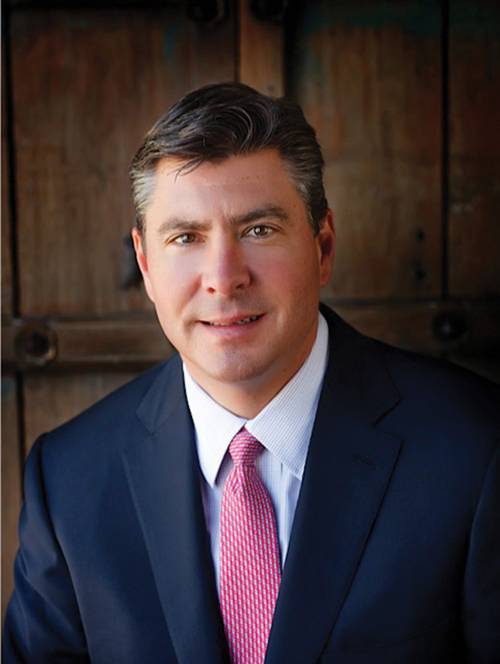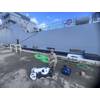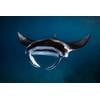Insights: Todd M. Hornbeck
Chairman, President and Chief Executive Officer, Hornbeck Offshore Services, Inc.
While this month’s selection for our INSIGHTS feature needs no introduction to maritime and energy insiders everywhere, Todd Hornbeck’s professional journey is worth pausing to reflect upon. Hornbeck, Chairman, President and Chief Executive Officer of Hornbeck Offshore Services, Inc. (NYSE:HOS), founded the company in 1997. Until 2002 Mr. Hornbeck served as the President and Secretary of the company, when he was appointed Chief Executive Officer and then, Chairman of the Board in 2005. Hornbeck also worked for the original Hornbeck Offshore Services until 1996, serving in various positions related to business strategy and development. Following the merger of Hornbeck Offshore Services, Inc. with Tidewater in March, 1996, he accepted a position as Marketing Director – Gulf of Mexico with Tidewater, where his responsibilities included managing relationships and overall business development in the U.S. Gulf of Mexico region. He remained with Tidewater until the formation of Hornbeck Offshore Services, Inc. Today, Hornbeck serves as Chairman of Offshore Marine Service Association (OMSA) and Vice Chairman of the International Support Vessel Owners’ Association (ISOA). Follow along as he shows the way forward for Hornbeck Offshore Services, its customers, and the global energy industry.
Already operating one of the youngest and largest fleets in the water, Hornbeck is nevertheless pressing forward with an aggressive newbuild program. What’s the primary driver for this business decision?
Quite simply it is the evolving needs of our customers. We are not about growth for growth’s sake. We continue to strategically grow by anticipating our customers’ evolving needs and expanding the capabilities of our fleet to address those requirements. Our company was founded with a focus on the deepwater and ultra-deepwater markets, and as exploration and production activities expand further offshore and at greater well depths we believe our fleet must also continue to evolve. We see a flight to quality assets and operators and growing demand for larger, more capable vessels.
Have you looked at LNG / Dual-Fuel power options for your vessels? Why are you choosing a different route for your tonnage?
We currently view LNG/Dual-Fuel powered supply vessels as a niche market, as only a few customers in our core markets have expressed interest in this solution. Their interest appears to be more driven by developing an alternative market for LNG than operational requirements. We have however evaluated LNG/Dual-Fuel alternatives and actually participated in a tender earlier this year. Based on our experience, it is clear there is a significant cost premium to construct and operate these vessels but we have not seen a corresponding premium in the day rates. Accordingly, we believe the route we have chosen is in the best interests of our customers, employees and investors.
People always talk safety – you produce results. Your fleet owns a better total recordable incident rating (RIR) than most of your peers, as well as OMSA and IADC benchmarks. What’s your secret?
There is no “secret sauce.” It requires an ongoing and significant investment in people and commitment from all levels of the company – most importantly a personal commitment to behave safely. It requires a relentless desire to drive toward zero incidents. Every year we have a large number of our vessels work incident free so we know “target zero” is an attainable goal. It also requires a commitment to “stop work” when conditions exist that unnecessarily increase the risks of injuring people or damaging the environment or property.
Spanning 9 geographic markets and six service lines, your market focus is diversified, but more than 50% of your equipment is U.S.-based. Where do you see those numbers in one year? Five years?
We believe our vessels can perform anywhere in the world. We will mobilize our vessels to markets that we believe over time will offer our investors the greatest return. Our focus has been on deepwater and ultradeepwater so we expect over time our core markets will remain the U.S. Gulf of Mexico, Brazil and Mexico. There are other international markets we will continue to work in opportunistically and further evaluate as we deliver our newbuilds. We will continue to participate in the construction, inspection, maintenance and repair markets. We will also continue to pursue specialty niches where innovative solutions are required and valued accordingly.
Regarding your newbuild program, you project that your already substantial fleet will grow by 75%by 2015. Quite simply, can the market sustain that kind of growth? If so, why and how?
We currently operate 51 offshore supply vessels and 4 multipurpose support vessels. We have 20 vessels under construction with options to build 44 additional vessels. We currently rank number 4 in the global new generation supply vessel market (152 companies and 1,132 vessels including 291 under construction) based on deadweight tonnage (6% of the total deadweight – roughly the same as Tidewater and Bourbon or in other words a three-way tie for 2nd in the world). Our core markets represent 41% of the world’s deadweight tonnage and we have a leading position in each of those core markets (#2 U.S. GoM, #6 in South America, and #4 in Mexico). The deadweight tonnage of our fleet will grow by more than 75% by 2015. There are a number of reasons why believe the market can sustain our anticipated growth. There are some macro factors that lead us to this conclusion including nearly 100 high-specification floating drilling rigs that are under construction. Also, it is not just the number of vessels but the types of vessels that will be required. Nearly 90% of the forecasted floating rig demand is in water depths of more than 3,000 feet and nearly 60% of the demand is depths exceeding 5,000 feet. These leading indicators, including projected growth in deepwater capital expenditures by our customers and the imbalance between depletion, production and consumption of hydrocarbons, suggest that larger and more capable vessels will be required to explore and develop more remote areas and at greater well depths.
As the “Flight to Quality” takes hold, is the oil & gas industry finally ready to pay for high-tech, fully modern tonnage while eschewing lower cost marginal players? In other words, is “going green” finally producing “green” for your bottom line?
In certain regions of the world, such as the U.S. Gulf of Mexico, we do see the “flight to quality.” We also expect it to see it evolve in other markets, such as Brazil. However, it is much more than just “going green.” It is more about total quality – people, equipment and performance. That level of quality requires a significant investment of resources. At the end of the day, we believe there will be fewer companies capable of consistently meeting the ever-increasing standards of our clients and the regulators of our industry, who in some cases have exacerbated the shortage of available human capital. Furthermore, costs continue to escalate so at this stage most service companies are simply trying to preserve their margins. So while there is a migration to higher quality operators and equipment, the bottom line will be driven by more favorable supply / demand drivers and cost control / awareness.
Your loyalty to U.S. yards in your newbuild programs is remarkable, especially when some of these hulls may someday be flagged out and deployed in foreign markets. You insist that pricing here is comparable to foreign yards – how did you achieve this and what else went into your decision process?
We believe the pricing we have received from the U.S. shipyards for our new construction program is competitive on a global basis. At approximately $7,500 per deadweight ton, we are at an attractive cost basis for new 280 and 300 class vessels. The scale and timing of our program provided us with valuable opportunity. However, price is not the only variable. We have added “optionality” by constructing vessels that qualify for coastwise trade under the U.S. Jones Act. Quality and schedule also are important variables in determining value and we believe the scale of our program, and the proven designs and shipyards we have selected, offer the greatest value to our investors. It was important to us that the vessel deliveries occur in 2013-2015, when nearly 60 newly constructed floating rigs are expected to enter the market.
You tout a diversified fleet mix of Multi-class OSV and MPSV tonnage that is capable of serving clients “from cradle to grave.” But, what does that mean exactly?
It means we have a fleet of diverse marine equipment that is capable of meeting many of our clients’ requirements across their enterprise. Our smaller, DP-1 vessels provide support to production activities while our larger DP-2 vessels support drilling operations. We have multiple vessels performing well stimulation services. Our DP-3 MPSVs support construction, inspection, maintenance and repair in addition to well intervention and decommissioning activities. Our 370 class vessels are the only vessels in the world multi-certificated by the U.S. Coast Guard as supply vessels, industrial / freight vessels, chemical tank ships, and oil spill response vessels. We expect our 300 class vessels will also fulfill multiple roles in the exploration and production cycle.
(As published in the December 2012 edition of Marine News - www.marinelink.com)














 December 2025
December 2025



